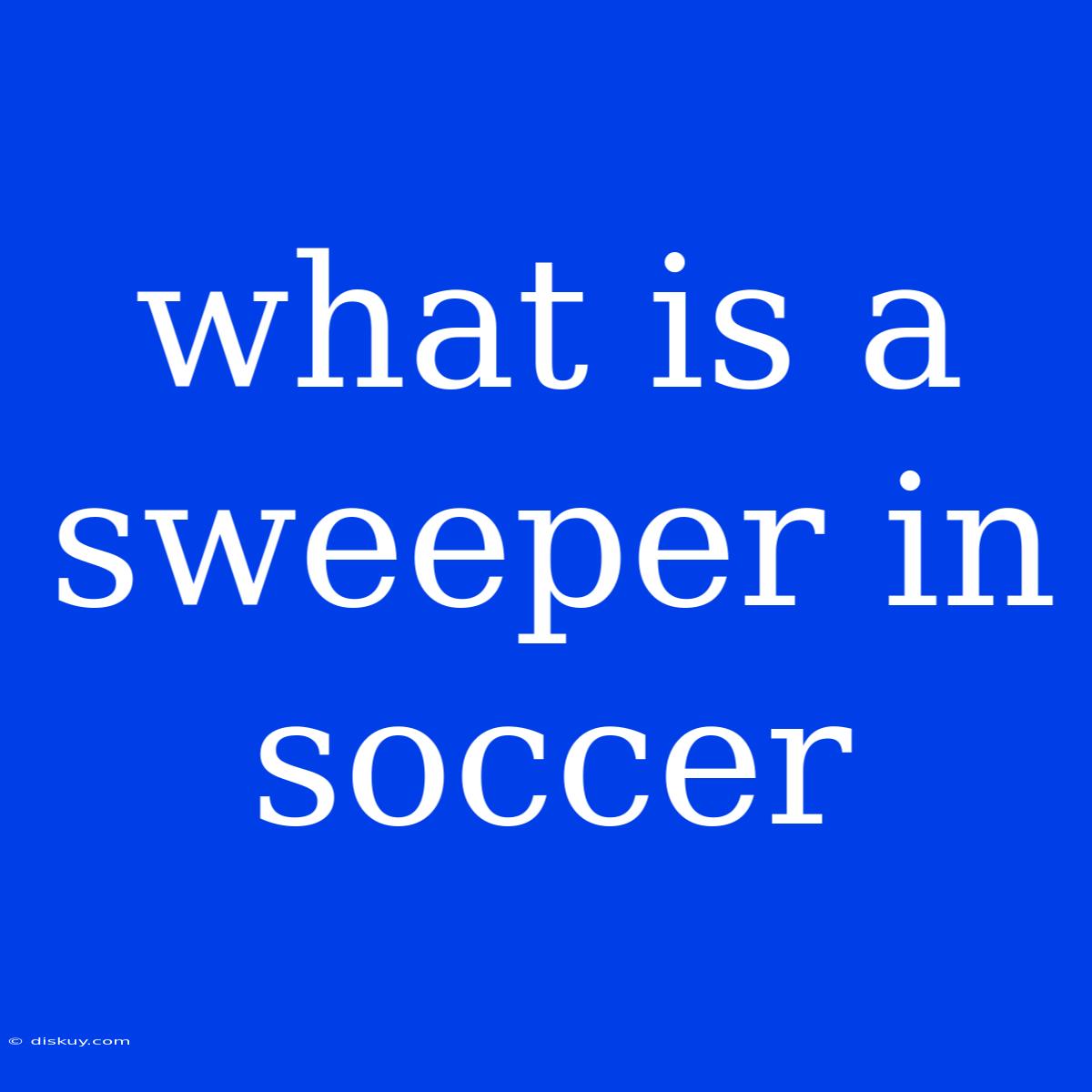What is a Sweeper in Soccer? The Unsung Hero of Defense
What is a Sweeper in soccer? It's a defensive position, often considered a crucial "last line of defense" and one of the most important roles in football.
Editor Note: The sweeper position has become increasingly rare in modern football, but its impact on the game's tactics remains significant.
Why is this important to read? Understanding the sweeper position helps you appreciate the nuances of soccer strategy, learn about the evolution of the game, and identify this unique defensive role when watching matches. This article delves into the sweeper's responsibilities, benefits, drawbacks, and how it evolved over time.
Analysis: We researched historical tactics, modern formations, and expert opinions to build this comprehensive guide on the sweeper. This article will provide clear insights into this complex position and its impact on soccer.
Key Takeaways about the Sweeper:
| Feature | Description |
|---|---|
| Position | Often a central defender positioned behind the regular defensive line. |
| Responsibilities | Covers space behind the defense, intercepts passes, and initiates counterattacks. |
| Style | Typically a good reader of the game, comfortable with the ball at their feet, and able to distribute effectively. |
| Modernity | Less common in modern football due to shift towards high-pressing formations. |
The Sweeper: A Deeper Dive
The sweeper role is a fascinating element of soccer history. Here's a closer look at its key aspects:
Position and Role
The sweeper, often a defender with strong technical skills and tactical awareness, operates behind the traditional backline. Unlike other defenders who focus on man-marking, the sweeper's role is more about covering space and anticipating attacks. They are the last line of defense, tasked with stopping opponents who manage to break through the initial defensive line.
Key Responsibilities
- Covering Space: The sweeper fills the gap between the backline and the goalkeeper, preventing opponents from exploiting any space left open.
- Intercepting Passes: They read the game and anticipate opponent passes, intercepting balls before they reach the attacking players.
- Initiating Counterattacks: As they are positioned to see the entire field, sweepers can swiftly initiate counterattacks by distributing the ball to their teammates.
Advantages of the Sweeper System
- Stronger Defensive Structure: The sweeper provides an additional layer of protection, making the defense more compact and difficult to penetrate.
- Greater Flexibility: It allows defenders to focus on man-marking, knowing the sweeper will cover the space behind them.
- Efficient Counterattacks: Sweepers can quickly launch attacks by launching long passes or initiating plays.
Disadvantages of the Sweeper System
- Vulnerability to Direct Attacks: If the sweeper is bypassed, the defense is exposed to direct attacks.
- Miscommunication Risks: Clear communication is vital between the sweeper and other defenders to prevent defensive mishaps.
- Requires Specific Player Profile: A skilled sweeper needs a unique blend of technical and tactical abilities.
Evolution of the Sweeper Role
The sweeper position originated in the mid-20th century and was popularized by legendary Dutch coach Rinus Michels. However, modern football has witnessed a decline in the use of the sweeper. With the rise of high-pressing tactics and the emphasis on attacking football, the role of the sweeper has become less prominent.
FAQ about Sweepers
Q: Is the sweeper still used in modern football? A: While less common, some teams still employ a sweeper, particularly in defensive formations.
Q: Who are some famous examples of sweepers? A: Franz Beckenbauer, Franco Baresi, and Alessandro Nesta are considered legends of the sweeper position.
Q: Is it a good idea for every team to have a sweeper? A: Not necessarily. The sweeper system requires a particular playing style and player profile, which isn't suitable for every team.
Q: What are the key skills needed for a sweeper? A: A sweeper should possess exceptional reading of the game, strong passing ability, composure under pressure, and tactical awareness.
Tips for Mastering the Sweeper Role
- Practice anticipation: Understand opponent movement and passing patterns to anticipate their attacks.
- Develop strong communication: Communicate clearly with defenders to prevent mishaps.
- Master passing: Be accurate with short and long passes to launch counterattacks.
- Maintain composure: Stay calm and focused under pressure, especially during a counterattack.
Summary of the Sweeper
The sweeper, a once-iconic position, remains a fascinating aspect of soccer history. Its importance as a defensive anchor and ability to initiate counterattacks continue to influence tactics even in today's fast-paced game. While less common, the sweeper's legacy underscores the diversity and complexity of soccer strategy.
Closing Message: As the game evolves, the sweeper role may continue to adapt or even disappear. However, its historical significance and impact on the game remain undeniable. Its story reminds us that soccer is a dynamic sport where tactics and player roles are constantly in flux.

